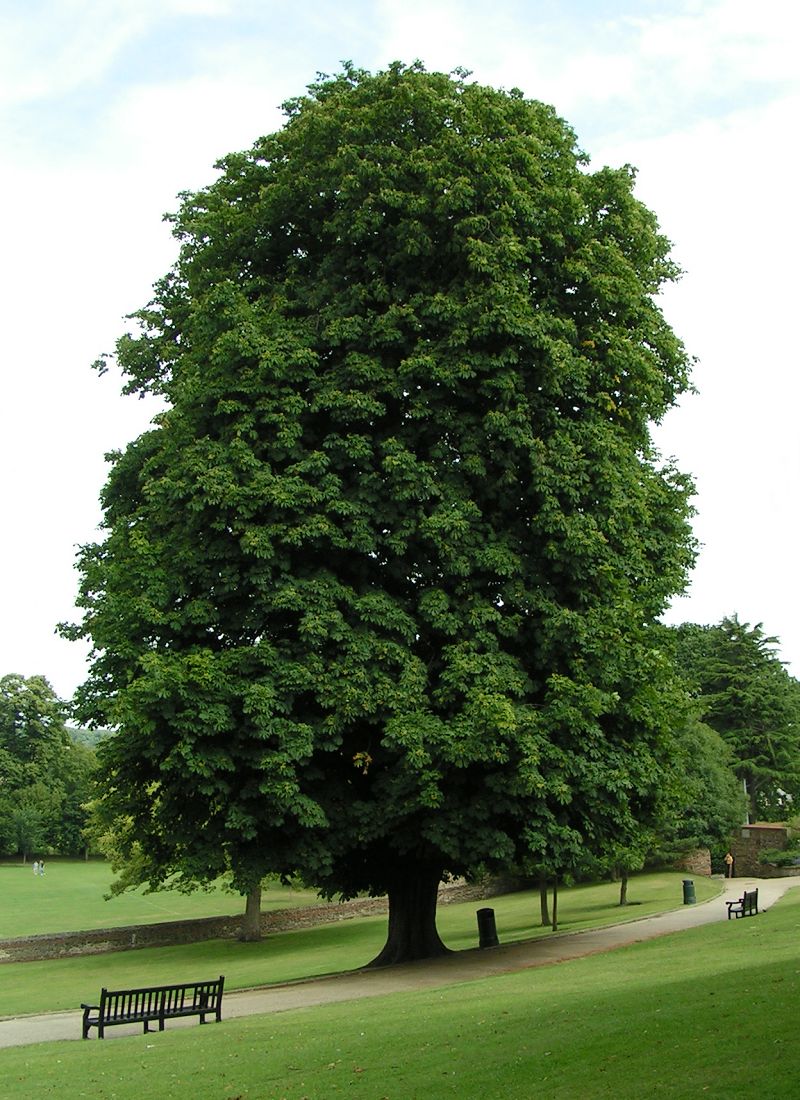|
Großes Moor (near Becklingen)
The Großes Moor near Becklingen (german: Großes Moor bei Becklingen) is a nature reserve in Germany with an area of , of which lie in Celle district and in Soltau-Fallingbostel district. Since 16 December 1985 the area has been protected under conservation law. An area of is designated as a special area of conservation (''FFH-Gebiet''). The name literally means "Large Bog near Becklingen" and it lies on the Lüneburg Heath, south of Wietzendorf and east of Becklingen, part of the borough of Bergen. The River Meiße has its source in this raised bog. Development The original bog had been drained since the 1950s and largely converted to grassland in order to establish small rural settlements here. Since then the state of Lower Saxony has purchased large areas. Through water retention measures it is intended that the original bog landscape can be recreated. Problems are being caused, though, by cultivated blueberries and black cherries, neophytes that have become widesprea ... [...More Info...] [...Related Items...] OR: [Wikipedia] [Google] [Baidu] |
Neophyte (botany)
In botany, a neophyte (from Greek νέος (''néos'') "new" and φυτόν (''phutón'') "plant") is a plant species which is not native to a geographical region and was introduced in recent history. Non-native plants that are long-established in an area are called archaeophytes. In Britain, neophytes are defined more specifically as plant species that were introduced after 1492, when Christopher Columbus arrived in the New World and the Columbian Exchange began. Terminology The terminology of the invasion biology is very uneven. In the English-speaking world, terms such as invasive species or the like are mainly used, which is interpreted differently and do not differentiate between different groups of animals or characteristics of the species. The International Union for Conservation of Nature and Natural Resources (IUCN) differentiates in its definitions between alien species and invasive alien species; Alien species are species that have been introduced into a foreign area ... [...More Info...] [...Related Items...] OR: [Wikipedia] [Google] [Baidu] |
Bogs Of Lower Saxony
A bog or bogland is a wetland that accumulates peat as a deposit of dead plant materials often mosses, typically sphagnum moss. It is one of the four main types of wetlands. Other names for bogs include mire, mosses, quagmire, and muskeg; alkaline mires are called fens. A baygall is another type of bog found in the forest of the Gulf Coast states in the United States.Watson, Geraldine Ellis (2000) ''Big Thicket Plant Ecology: An Introduction'', Third Edition (Temple Big Thicket Series #5). University of North Texas Press. Denton, Texas. 152 pp. Texas Parks and Wildlife. Ecological Mapping systems of Texas: West Gulf Coastal Plain Seepage Swamp and Baygall'. Retrieved 7 July 2020 They are often covered in heath or heather shrubs rooted in the sphagnum moss and peat. The gradual accumulation of decayed plant material in a bog functions as a carbon sink. Bogs occur where the water at the ground surface is acidic and low in nutrients. In contrast to fens, they derive most of th ... [...More Info...] [...Related Items...] OR: [Wikipedia] [Google] [Baidu] |
Nature Reserves In Lower Saxony
There are 764 nature reserves in the state of Lower Saxony in north Germany, covering a total area of as at 31 December 2008. These reserves currently form about 4.72% of the land area in the state, including the coastal waters out to . In addition, there are two national parks and one biosphere reserve that are also under strict protection and which raise the area coverage to 11.32%.http://www.nlwkn.niedersachsen.de/master/C8380003_N5512608_L20_D0_I5231158.html Accessed on 16.09.2009 The table below shows a selection of these reserves. Where a nature reserve extends over several rural (''Landkreise'') or urban districts (''Kreisfreie Städte'') these are given in order of the size area covered. By sorting on the column "Rural/Urban District" the reserves that are found wholly or partially within a district can be seen at a glance. In order to locate the other areas, use the search function of your computer keyboard (''CTRL'' / ''Ctrl'' + ''F''). The NSG Nos. (i.e. nature reser ... [...More Info...] [...Related Items...] OR: [Wikipedia] [Google] [Baidu] |
Meißendorf Lakes
Meißendorf is a village and ''Ortschaft'' (municipal division) of the municipality of Winsen an der Aller in the Lower Saxon district of Celle in northern Germany. December 2020. It lies northwest of Winsen an der Aller. It derives its name from the river which flows through the village. 1,666 people have their main residence in Meißendorf and 224 have a second home here. There is also a campsite with about 100 permanent pitches and a mobile home site. The Lower Saxony Nature Conservation Society runs a nature conservation centre on the Sunder Estate (''Gut Sunder'') with 600 participant ... [...More Info...] [...Related Items...] OR: [Wikipedia] [Google] [Baidu] |
Ostenholz Moor
Ostenholz Moor (German: ''Ostenholzer Moor'') is a raised bog on the Lüneburg Heath in the German state of Lower Saxony. It is named after the village of Ostenholz and is not far from Meißendorf. The bog is almost entirely within the Bergen-Hohne Military Training Area and, as a result, has been largely left to develop naturally. The River Meiße separates Ostenholz Moor from the nature and bird reserve of the '' Meißendorf Lakes and Bannetzer Moor''. The bog's landscape largely forms a natural boundary for the actual nature reserve which has been purchased by Celle district. The Meißendorf Lakes, formerly a network of ponds for fish-farming, are today the most important migration and breeding ground for numerous marsh and water birds. Around 250 species of bird may be seen here, including the crane, the black stork and the osprey The osprey (''Pandion haliaetus''), , also called sea hawk, river hawk, and fish hawk, is a diurnal, fish-eating bird of prey w ... [...More Info...] [...Related Items...] OR: [Wikipedia] [Google] [Baidu] |
Sittensen
Sittensen is a municipality in the district of Rotenburg, in Lower Saxony, Germany. It is situated approximately 20 km northeast of Rotenburg, and 45 km southwest of Hamburg. Sittensen belonged - as to its government - to the Prince-Archbishopric of Bremen, established in 1180.Michael Schütz, „Die Konsolidierung des Erzstiftes unter Johann Rode“, in: ''Geschichte des Landes zwischen Elbe und Weser'': 3 vols., Hans-Eckhard Dannenberg and Heinz-Joachim Schulze (eds.) on behalf of the Landschaftsverband der ehemaligen Herzogtümer Bremen und Verden, Stade: Landschaftsverband der ehemaligen Herzogtümer Bremen und Verden, 1995 and 2008, vol. I 'Vor- und Frühgeschichte' (1995; ), vol. II 'Mittelalter (einschl. Kunstgeschichte)' (1995; ), vol. III 'Neuzeit' (2008; ), (=Schriftenreihe des Landschaftsverbandes der ehemaligen Herzogtümer Bremen und Verden; vols. 7–9), vol. II: pp. 263–278, here pp. 270seq. . In religious respect, however, Sittensen formed part of the R ... [...More Info...] [...Related Items...] OR: [Wikipedia] [Google] [Baidu] |
Kiehnmoor
The Kiehnmoor is a nature reserve in Germany. It was designated as a nature reserve in 1992. It has an area of of which lie in Celle district and in Uelzen district. The nature conservation authorities of these districts are responsible for the reserve. A large part of the area is wet meadow, that in places is intensively farmed. However the majority of the area has been left in its natural state. A small sand heath forms part of the reserve. Its southern perimeter borders immediately on the larger heathland area of the Südheide Nature Park. The ''Heidschnucken'', moorland sheep characteristic of the region, are reared here. North of the Kiehnmoor and immediately adjacent to it is the valley of a partially dammed stream, the ''Gerdau'', and the Brambosteler Moor nature reserve. To the southeast the reserve borders on the Unterlüß Firing Range (''Schießplatz Unterlüß''), belonging to the firm of Rheinmetall, and the ''Große Heide'' ("Large Heath") near Unterlüß, that is cl ... [...More Info...] [...Related Items...] OR: [Wikipedia] [Google] [Baidu] |
Unterlüß
Unterlüß is a village and former municipality in the district of Celle in Lower Saxony, Germany. It became part of the municipality of Südheide on 1 January 2015. It is about 30 km north-east of Celle and 25 km south-west of Uelzen. It is a station on the railway between Hanover and Hamburg. History The name Lüß was documented in 1569 for a forest, which was probably the source for the name. In 1847, the railroad was built, eventually becoming part of the line between Hanover and Hamburg, and a station Unterlüß was created, causing a settlement around it. In 1899, the company Rheinmetall (then Rheinische Metallwaren- und Maschinenfabrik Aktiengesellschaft) first installed a shooting range and then began manufacturing weapons. The settlement became a municipality in 1910. After World War I, Rheinmetall had to turn to civil production. They managed a model estate. Some labourers found work in the Kieselgur industry. During the German re-armament, the produ ... [...More Info...] [...Related Items...] OR: [Wikipedia] [Google] [Baidu] |
Rheinmetall
Rheinmetall AG is a German automotive and arms manufacturer, headquartered in Düsseldorf, Germany. Its shares are traded on the Frankfurt stock exchange. History Rheinmetall was founded in 1889. Banker and investor Lorenz Zuckermandel Lorenz Zuckermandel (18 February 1847 – 6 January 1928) was a German banker, investor, founder and translator, among other things, of Dante Alighieri's Divine Comedy. Thanks to his many talents, he worked his way from being the poor son of a ... (1847–1928) was one of the founders and the first chairman of the supervisory board. It manufactured steel products, including armaments. During the post-WWI disarmament of Germany, the company diversified, but by the 1930s armament manufacture resumed. In 1933, it acquired A. Borsig GmbH, which manufactured locomotives. References External links * * {{Authority control 1889 establishments in Germany Defence companies of Germany Engineering companies of Germany Companies in the ... [...More Info...] [...Related Items...] OR: [Wikipedia] [Google] [Baidu] |
Lüneburg Heath Nature Reserve
The Lüneburg Heath Nature Reserve (German: ''Naturschutzgebiet Lüneburger Heide'') is one of the oldest and largest nature reserves ('' Naturschutzgebiete'' or ''NSG''s) in Germany, and the oldest and largest in Lower Saxony. It was first established on 29 December 1921 when an area of four square miles was declared a nature park by the Prussian government. Description of the area The boundaries of the ''Lüneburg Heath Nature Reserve'' are identical with those of the ''Lüneburg Heath Nature Park''. It lies in the northern part of the region known as the Lüneburg Heath. It is bordered to the north by Hanstedt, to the east by Egestorf, to the south by Bispingen and to the west by Schneverdingen. At the centre of the reserve is the Wilseder Berg, at above NN the highest point on the north German plain, formed from a ridge of end moraine by the glaciers of the ice age. Around 1900, the vast tracts of heathland were planted with forest or ploughed up for agriculture. In 1921, ... [...More Info...] [...Related Items...] OR: [Wikipedia] [Google] [Baidu] |
Bergen-Hohne Training Area
Bergen-Hohne Training Area (German: ''NATO-Truppenübungsplatz Bergen'' or ''Schießplatz Bergen-Hohne'') is a NATO military training area in the southern part of the Lüneburg Heath, in the state of Lower Saxony in northern Germany. It covers an area of , which makes it the largest military training area in Germany. It was established by the German armed forces, the ''Wehrmacht'', in 1935. At the end of the Second World War it was taken over by British occupying forces and some of its facilities used as a liberation camp for survivors of the Bergen-Belsen concentration camp, which was located on the edge of the training area near the town of Bergen. Under British control, the training area was steadily expanded and, since the 1960s, has also been used by the German Armed Forces (''Bundeswehr'') and other NATO troops. Geography Location Bergen-Hohne Training Area is situated on both sides of the boundary between the districts of Heidekreis (formerly ''Soltau-Fallingbostel' ... [...More Info...] [...Related Items...] OR: [Wikipedia] [Google] [Baidu] |



